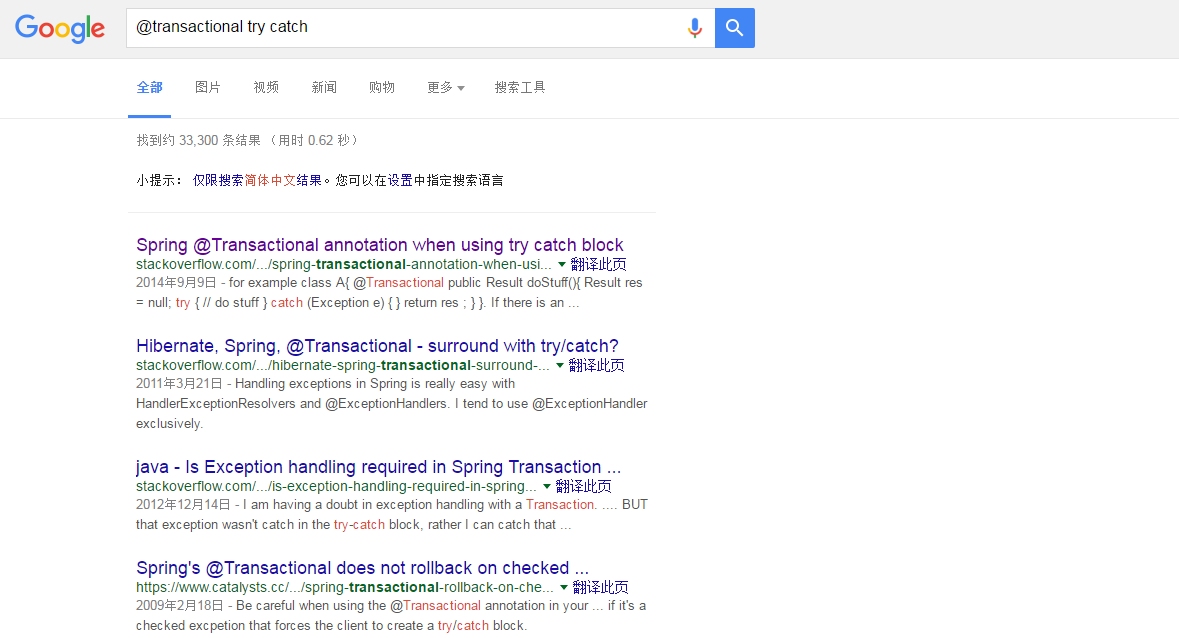3.18号面试。金融公司 → 系统架构(有一个牛人带) 具体地址等会放上来http://ourcoders.com/thread/show/7449/
面试题:
- quartz 建议看看这位老师的http://www.cnblogs.com/kay/archive/2007/11/02/947372.html
- 根据web请求参数返回特定值 ,/hello?p1=p1&p2=p2 返回hello ,/hello?x=x&man=you 返回you are X man。根据以上设计xml文件。(场景:微信开发调试的时候用于返回特定的值等等—对方解释)
<?xml version="1.0" encoding="UTF-8"?> <elements> <nodes> <pramas> <prama name="p1">1</prama> <prama name="p2">2</prama> </pramas> <result>helloworld</result> </nodes> <nodes> <pramas> <prama name="a">a</prama> <prama name="b">b</prama> </pramas> <result>hello</result> </nodes> </elements>
根据特定的参数和值返回特定的值。以上个人见解。
3.22 掌握科技 → 只和技术领导谈了谈。技术问了一个问题。一个大数整数数组*个位数。返回一个数组。
[1,3,4,6,7,8,9,2,3,0,8,7]*8 相当于134678923087*8返回一个数组
class BigNum { public static int[] sub(int[] item,int s){ if(!(s > 0 && s < 10)){ return new int[0]; } int tens = 0; int[] rs = new int[item.length+1]; for (int i = 0; i < item.length; i++) { int c = item[i] * s; int last = c%10; rs[item.length - i] = (last + tens) % 10 ; if((last + tens) >= 10){ tens = (c-last)/10 + 1; } else { tens = (c-last)/10; } } rs[0] = tens; return rs; } public static int[][] twoSub(int[] item,int s){ if(!(s > 0 && s < 10)){ return new int[0][0]; } int[][] rs = new int[item.length][2]; for (int i = 0; i < item.length; i++) { int c = item[i] * s; int last = c%10; int first = (c-last)/10 ; rs[i][0] = first; rs[i][1] = last; } return rs; } public static void main(String[] args) { int[] b = new int[10]; for (int i = 0; i < b.length; i++) { b[i] = 8; } int[] a = sub(b,8); for (int i = 0; i < a.length; i++) { System.err.print(a[i]); } int[][] c = twoSub(b, 8); for (int i = 0; i < c.length; i++) { int[] j = c[i]; for (int j2 = 0; j2 < j.length; j2++) { System.err.print(j[j2]); } System.err.println(); } } }
返回结果如下:
7111111110464 64 64 64 64 64 64 64 64 64
个人觉得用二维数组较好。
3.28号 车风网面试 面试官主要问了一些java 相关基础知识,hashmap,treemap.io,spring 事务管理。cookie 跨域处理。
我重点说一个题目:下图展示既是我想说的。

搬运一个最佳答案吧。和我想的差不多。就是事务在发送exception时必须进行干预处理。
for example
class A{ @Transactional public Result doStuff(){ Result res = null; try { // do stuff } catch (Exception e) { } return res ; } }
If there is an exception in the method doStuff the transaction isn't rolled back.
To rollback the exception programmatically, we can do something like below.
declarative approach
@Transactional(rollbackFor={MyException1.class, MyException2.class, ....})
public Result doStuff(){
...
}
programmatic rollback you need to call it from TransactionAspectSupport.
public Result doStuff(){ try { // business logic... } catch (Exception ex) { // trigger rollback programmatically TransactionAspectSupport.currentTransactionStatus().setRollbackOnly(); } }
You are strongly encouraged to use the `declarative approach` to `rollback` if at all possible.
`Programmatic rollback` is available should only be used if you absolutely need it.
谷歌翻译:强烈建议您使用`声明approach`为`rollback`如果在所有可能的。`编程回滚`是,如果你确实需要它可用时才能使用。
我翻译:建议使用声明式事务管理。不建议使用程序回滚。
面试还在进行中。。。。且行且努力
talk is cheap,show me code。
Interview ing 。。。。
顺带一句话,google,stackoverflow,github促进了coder交流学习。google大法好。